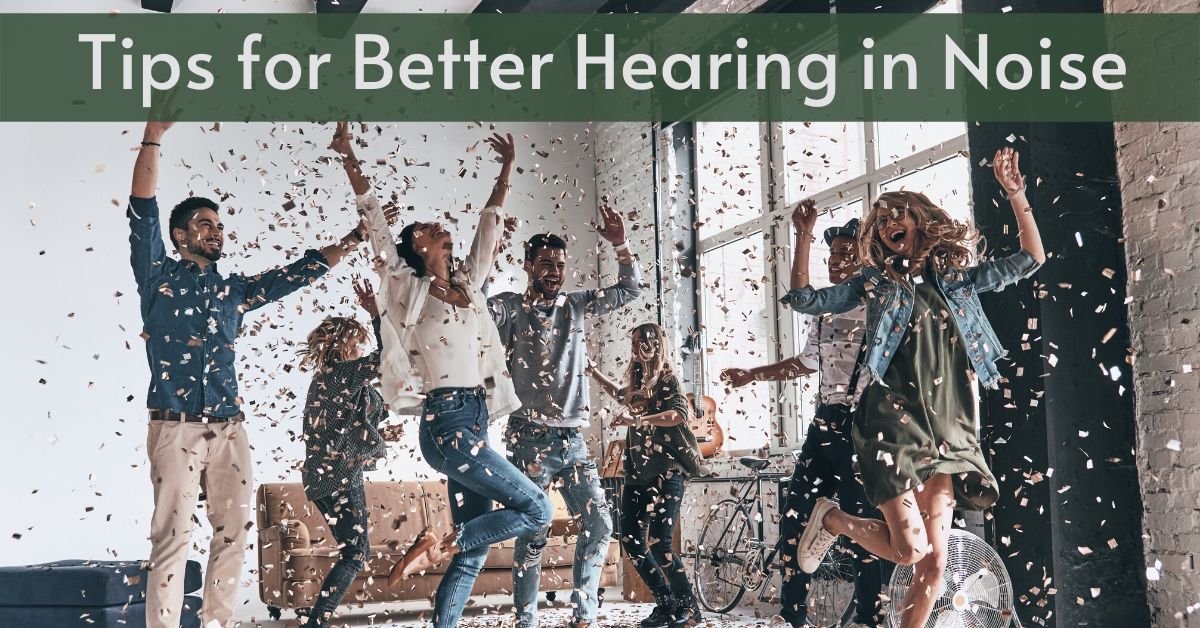It is common for hearing loss to appear gradually, even without our awareness. In many instances it is our ability to hear in noisy situations that declines first. Even if we can still hear fine in quiet places we may struggle to single out voices in crowds and noisy environments. When immersed in noise, the excess sound can mask the finer sounds of speech. Certain pitches and frequencies that help us interpret conversation may be lost to us. This can be exhausting and frustrating. Your brain has to work overtime to try to understand what people are saying, causing cognitive strain and making you feel left out of social situations.
Challenges with Background Noise
If you are using hearing aids, background noise can make hearing difficult. In face-to-face situations where there are three or more speakers it can be hard to distinguish hierarchies of important sounds. Speech styling that helps to understand the intent of a speaker can be hard to identify. Whenever your hearing is compromised this can put your safety at risk. If you are less aware of your surroundings in noisy environments you are less likely to hear warning signs like the sounds of cars approaching on the street or someone shouting a warning. If not addressed, problems with hearing in noise can put you at serious risk. However with a few tips, you can practice hearing better in crowded environments, helping to keep you and everyone around you just a bit safer.
Binaural Hearing Aids
If you’ve ever wondered why it is important to wear two hearing aids instead of one, the reasoning centers on hearing in noisy spaces. When there is sound around you it can be a challenge to pinpoint the location of specific noises. Binaural hearing or hearing with both ears allows you to hear and locate the noises around you. Wearing both hearing aids mimics the natural hearing of two ears, which allows your brain to process sound from multiple locations. This will improve your spatial understanding of spaces you occupy and allow you to navigate loud spaces with ease.
Digital Signal Processing
If you are new to hearing aids or are having trouble hearing in noisy spaces with your current pair then it is a good idea to ask your audiologist about digital signal processing (DPS). This feature is becoming commonplace in modern hearing aids. This function actually adapts to the listener’s individual needs around hearing. DPS uses directional microphones, which allow you to pick up sound from different locations in a space. DPS also uses adaptive feedback technology, which can minimize painful and distracting feedback to keep your hearing aid experience stress free in crowded places. Most importantly, especially for hearing in loud places, DPS employs noise reduction features, which can prioritize the sounds you are trying to hear, making sure you can hear the people you are trying to listen to.
Give your brain a workout
Research has found that if you are struggling to hear amongst background noise there are ways to train your mind to struggle less. Your brain is a muscle and if put to use can push your mind to work faster and more efficiently to work for you. This includes the ability to hear better in noisy situations. There are computer programs and Smartphone apps, which employ games and memorization skills to sharpen cognitive and auditory skills.
Find the hearing solution best for you
Challenge yourself to hear better. There is only room for improvement. If you are using hearing aids that aren’t helping you as much as they could, this is a great time to contact us so we can help you explore the newest innovations in hearing aids that help you hear better in noisy situations than ever before.

